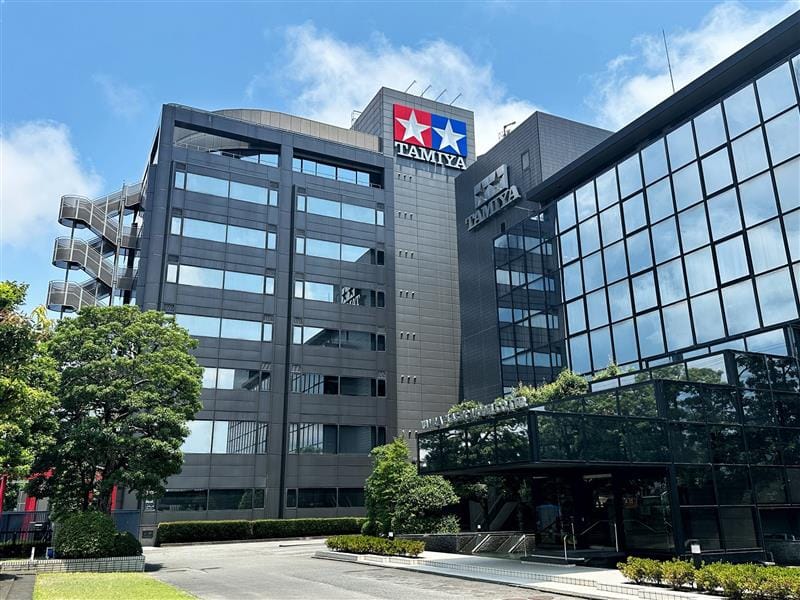Tamiya History: From Wood Saws to Mini 4WD
Tamiya’s history began in the wood industry and evolved into the pioneer of Mini 4WD, an iconic miniature racing hobby worldwide.

Tamiya is more than just a toy brand—its name is synonymous with innovation, quality, and a culture that has spanned generations. Tamiya’s journey is living proof that transformation, from a humble wood saw manufacturer in Japan to the global icon of Mini 4WD, was achieved through vision, consistency, and creativity, ultimately making history in the hobby industry.
Early Beginnings: A Family Business in Shizuoka
In 1946, in the war-torn city of Shizuoka, Yoshio Tamiya founded Tamiya Shoji & Co. The company initially focused on wood processing for building materials, serving Japan’s urgent post-war construction needs. However, shifts in the market and limited resources prompted Yoshio Tamiya to rethink his business direction.
Driven by the need to adapt, Tamiya switched to making wooden toys in 1947. One of their first products was a wooden model warship, warmly received by the domestic market. Within a few years, Tamiya’s wooden toys had become favorites, especially among Japanese children.
The Leap to Plastic Model Kits
In the 1950s, the toy industry experienced a revolution with the arrival of plastic technology. Sensing huge potential, Tamiya launched its first plastic model kit in 1960, the 1:35 scale German Panther Tank. This product set a new standard: detail, precision, and quality previously unseen in the Asian market.
The great success of Tamiya’s tank kit led the company to further invest in research and development. Their next products included model airplanes, military vehicles, and ships, all praised for assembly ease and realistic details. The slogan “First in Quality Around the World” became attached to Tamiya, pushing them to export to the United States and Europe.
The RC Car Era: New Hobbies, New Communities
In 1976, Tamiya reached a major milestone by launching its first remote control car (RC Car), the Porsche 934 Turbo RSR. Tamiya’s RC cars were known for strength, durability, and easy modification. Soon after, competitions and hobby clubs sprung up in Japan and abroad, sparking a rapidly growing subculture.
The Birth of Mini 4WD: A Miniature Racing Revolution
The peak of innovation arrived in 1982, when Tamiya introduced the Mini 4WD Racing Buggy Series, mini race cars powered by AA batteries, running automatically on specialized tracks. The concept was simple yet revolutionary: users could assemble, modify, and race their cars, emphasizing mechanical creativity and technical experimentation.
Mini 4WD’s popularity exploded in 1986–1987, helped by the manga “Dash! Yonkuro,” which chronicled Mini 4WD racing adventures. Children and teens in Japan and Southeast Asia started collecting spare parts, building communities, and racing in local and national tournaments. Unlike RC Cars, Mini 4WD taught sportsmanship, creativity, and togetherness.
[Image: Mini 4WD racing in Japan, alt text: Tamiya Mini 4WD history]
Mini 4WD Goes International: Competition, Modification, and Pop Culture
By the 1990s, Mini 4WD had penetrated markets in Asia—including Indonesia, Malaysia, Taiwan, and the Philippines. Official competitions became more frequent, with the Tamiya World Cup emerging as a prestigious event. Mini 4WD turned into a subculture, complete with modification jargon and detailed engine upgrade techniques.
Manufacturers responded to market enthusiasm with limited edition products, innovative spare parts, and new body designs. Tamiya became a pioneer in standardizing the Mini 4WD hobby and driving community collaboration.
Enduring in the Modern Era: From Collectors to Digital Communities
Entering the 2000s, Tamiya maintained its tradition of innovation by launching new Mini 4WD and RC series, including collaborations with designers and global brands. Mini 4WD’s popularity rose and fell, but nostalgia and marketing to new generations sparked a revival, fueled by easy online access to information and community forums.
Today, Tamiya supports digital communities through apps, online forums, and even virtual tournaments. Both adult collectors and new generations actively participate, proving Mini 4WD and Tamiya model kits are a vital part of global pop culture.
Legacy and Inspiration: More Than Just Toys
Tamiya has not only survived but thrived, becoming a symbol of innovation, sportsmanship, and creativity. Its transformation from a wood industry player to a model kit giant proves that adaptation and quality are crucial in an ever-changing world. Tamiya is living proof that toys can connect generations, drive creative industries, and be an inseparable part of millions of lives.
This article only scratches the surface of Tamiya’s history. For many fans, every product and Mini 4WD generation holds its own timeless story. In the world of hobbies, Tamiya remains an inspiration to keep creating, competing, and celebrating boundless innovation.





Comments ()